Millyard Brook runs along the back of the parcel Kohl Construction would like to develop behind North Street. It is classified as an “intermittent stream”, meaning there are some days when it is dry, typically in the summer.
On January 11, a mild and rainy day, Millyard Brook is clearly not dry, but helping a large volume of water flow safely through the neighborhood. Adding impervious surface near streams like these can increase the speed and volume of runoff that flows into them and make them more flood-prone. In addition, the pollution from developed areas (e.g. salts, oils, herbicides) can harm the vegetation. As the City of Northampton acknowledges, “Problems with nutrient runoff, erosion, siltation, loss of groundwater recharge, poor water quality, vegetation change and harm to wildlife habitat are greatly exacerbated by activities within 100 feet of wetlands.”
Nevertheless, in 2007 the Northampton City Council approved a new Wetlands Ordinance that invites developers to encroach as close as 10 feet to wetlands like these in the more built-up parts of Wards 1-5. The affected areas include neighborhoods where a large portion of residents live.
Kohl Construction’s proposed condos aim to come within 35 feet of the wetlands around Millyard Brook, and presumably it will be necessary to disturb areas that are even closer. As written in the November report of The Sustainable Sites Initiative, “Even lawns and landscape beds, which are generally viewed as more permeable than pavements and roofs, are commonly compacted during construction and installation, resulting in reduced infiltration.[14,27] A residential lawn can be up to 40 percent impervious.[24] Disturbing soils and vegetation can increase dramatically the rate, volume, duration, and frequency of runoff as well as pollutant loadings of stormwater, which can affect water quantity and quality…”
We further recall that a property at the end of View Avenue–over 100 feet from the wetland boundary–reported flood damage from Tropical Storm Floyd in 1999, possibly a sign that the drainage in the area is stretched as it is.
And now, Millyard Brook…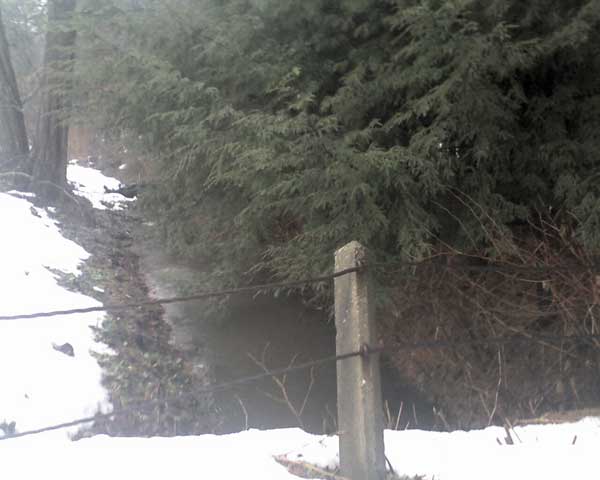
Millyard Brook as seen from Woodmont Road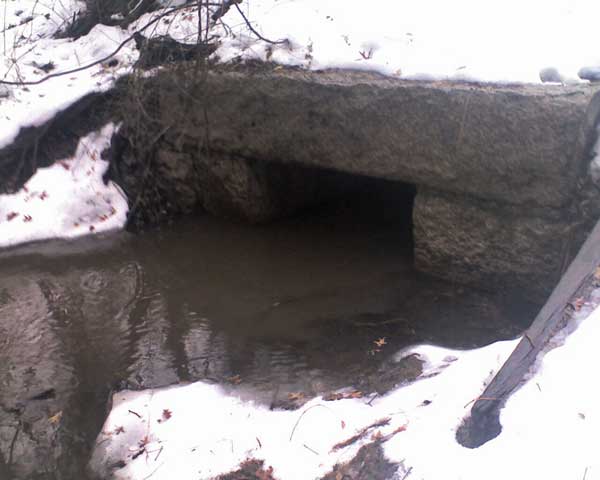
Millyard Brook emerges from under the new bike path to border Kohl Construction’s property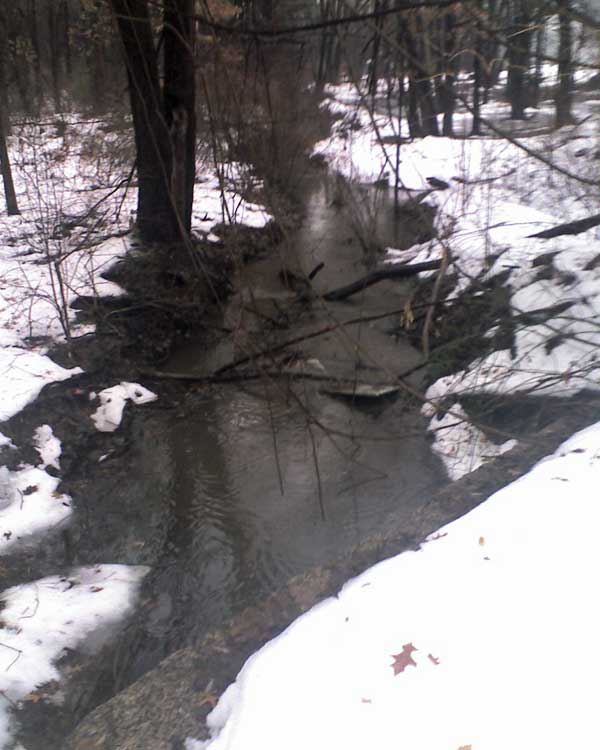
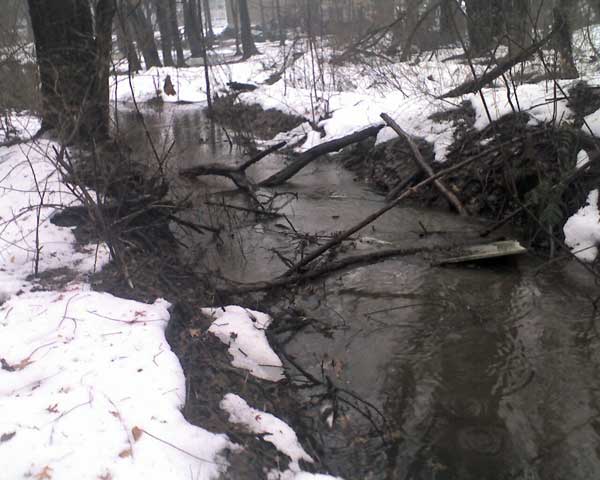
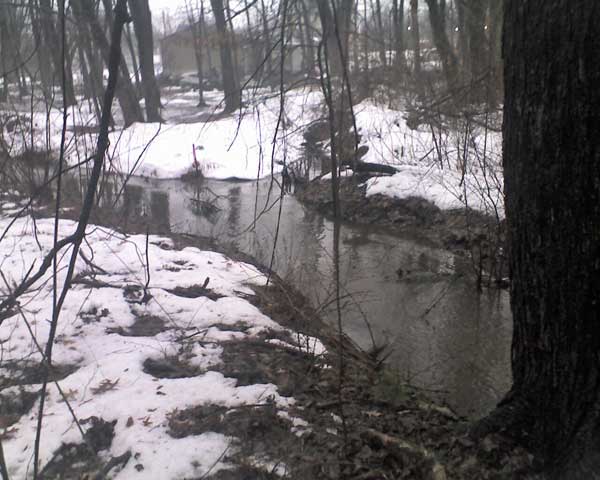
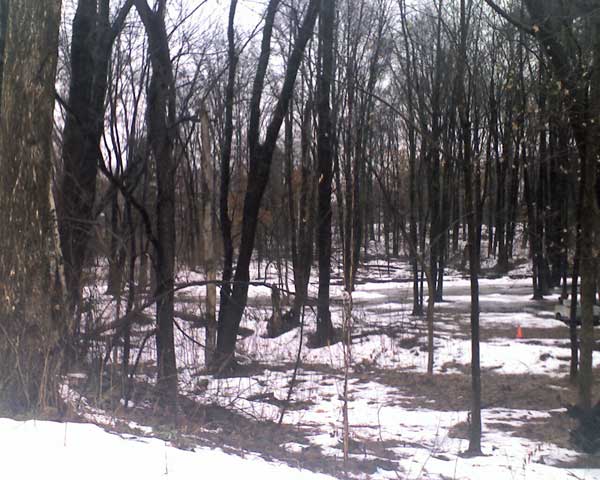
These areas of pooling water near the brook are suspected to contain one or more vernal pools. This will be investigated by the Northampton Conservation Commission in the spring.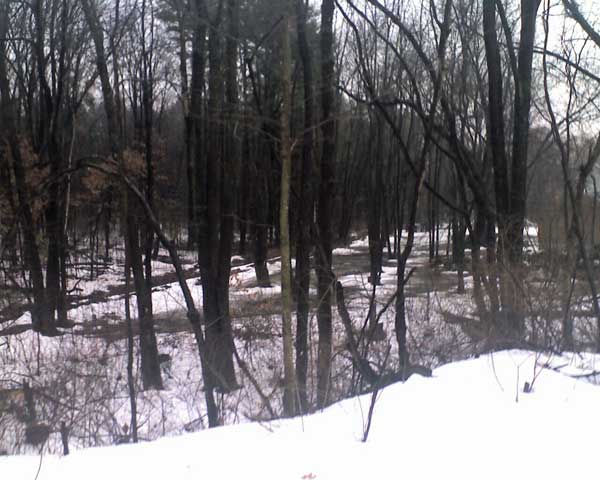
See also:
Photo Essay: Our Woods in Winter
Photo Essay: The Forest Behind View Avenue
Topographical Map Shows How Kohl Condo Proposal Will Eat Into a Rare Stand of Mature Trees in Downtown
The Republican: Vernal pools remain an issue
Former city councilor Alex D. Ghiselin said that 10 feet is “just not enough protection.”
“This is an issue between the present and the future,” Ghiselin said. “Growth that erodes the natural system isn’t smart.”
Gazette: “Region’s storms going to extremes, report finds” (12/5/07)
Today’s Gazette reports New England is experiencing more extreme rainstorms than in the past. We can also expect longer periods of relative dryness.
Extreme downpours and snowstorms are rising in frequency nationally, with the highest increases in New England…Wetlands can moderate both flooding and drought, absorbing excess water during storms and releasing it slowly during periods of dryness. Today’s report underscores the value of our remaining wetlands in Northampton.
Massachusetts saw a 67 percent rise in severe storms during [1948-2006], trailing only Rhode Island and New Hampshire…
…the top 10 severe storms in the state all occurred in the past decade…
…scientists expect that extreme downpours will punctuate longer periods of relative dryness, increasing the risk of drought…
Gazette opinion: “Don’t ease controls on wetlands” (10/25/07)
Hyla Ecological Services Analyzes the Proposed Wetlands Ordinance
Northampton’s Flood and Natural Hazard Mitigation Plan: Wetlands Buffers of 100 Feet Are an Effective Flood Mitigation Strategy and Should Be Consistently Enforced
Flooding is already affecting Northampton’s built-up areas during major storms. Weakening wetlands buffer zone requirements downtown will make this worse